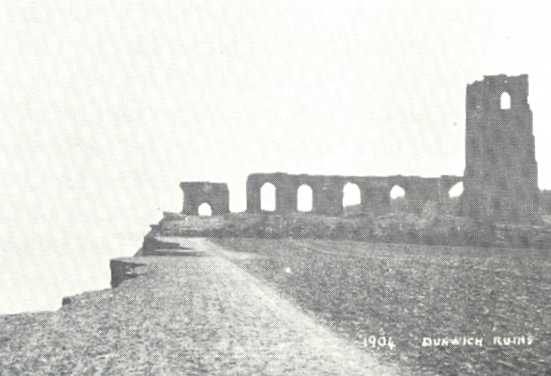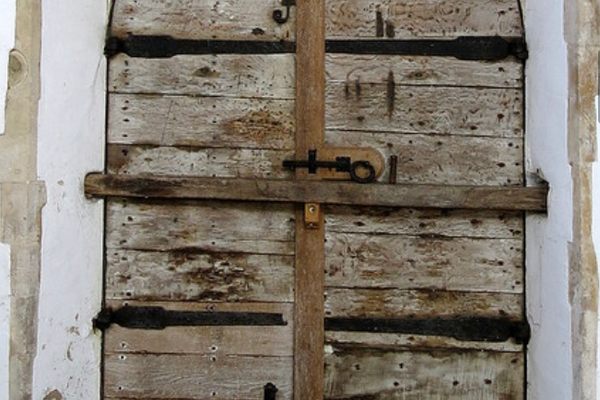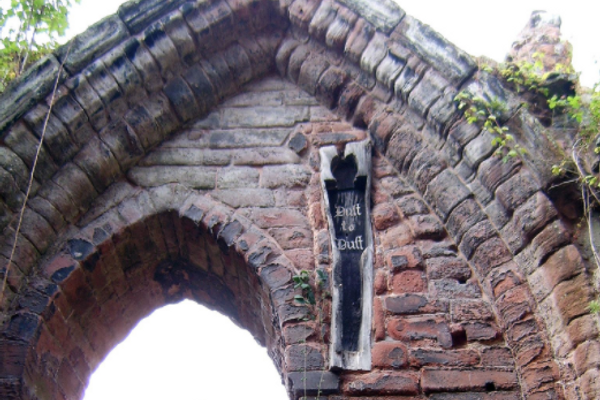The Last Grave
Forlorn amidst a thicket mere feet from a cliff's edge stands a solitary headstone that appears completely out of place, a haunting symbol of a once-thriving town now lost to the relentless forces of nature.
Much of the medieval port town of Dunwich slipped over the edge of a crumbling cliff and into the crashing waves of the North Sea centuries ago. Once one of the most significant ports in England, Dunwich’s glory days came to a tragic end as coastal erosion devoured its buildings, streets, and churches. Among those lost was All Saints Church, which had been a prominent place of worship until its abandonment in 1758. The church’s decline came as the cliff edge crept closer, but despite this danger, burials in its precarious cemetery continued for several years.
Today, only a single headstone remains from this burial ground, standing defiant yet doomed. All but one of the graves fell victim to the inexorable advance of the sea, and those graves now reside beneath the waves. The last surviving gravestone belongs to Jacob Forster, who was buried at the site in 1796. The headstone’s location is eerie—just 10 feet from the cliff edge—making it clear that it, too, is poised for its inevitable fall into the sea.
The sight of Forster’s lonely grave evokes a sense of melancholy, as the final resting place of one man now represents the fate of an entire town. Walking along the cliffs and seeing the headstone so close to the edge, you can almost feel the presence of Dunwich’s lost buildings and hear the waves that once lapped at its harbors now echoing far below. The grave stands as a testament to a vanished world, but how much longer it will persist in this precarious spot is up to mother nature.
While the story of “The Last Grave” is central to Dunwich’s modern identity, it also ties into the larger legend of the lost city of Dunwich, where it is said that on stormy nights, the bells of the submerged churches can still be heard ringing beneath the waves. Archaeological studies have confirmed the existence of these sunken ruins, adding an air of mystery and intrigue to this haunting coastal landscape.
Visitors to the site can also explore the beautiful surroundings of Dunwich Heath and Beach, where the rugged cliffs, windswept heathland, and the expansive North Sea create a dramatic backdrop to the story of this lost town. The Dunwich Museum, located in the village, provides further insights into the town’s history, detailing the rise and eventual fall of one of medieval England’s most important ports.
Know Before You Go
The Last Grave is located near the village of Dunwich on the Suffolk coast, positioned along the cliffs that overlook the North Sea.
The nearest car park to the grave is on Beach Road, and use of the car park is subject to making a discretionary donation. From here, you can access the site by foot.
Close to the junction of Beach Road and Monastery Hill, a public footpath leads to the clifftop. The Last Grave is about 600 feet along this footpath, making it easily accessible for most visitors. You can also reach the grave by taking a scenic walk through the grounds of the ruins of Greyfriars on Monastery Hill, adding a bit of historical exploration to your visit.
Warning signs of sudden cliff collapse are posted throughout the village and along the beach, so it is important to keep a safe distance from the cliff edge and avoid getting too close to the grave.






















Follow us on Twitter to get the latest on the world's hidden wonders.
Like us on Facebook to get the latest on the world's hidden wonders.
Follow us on Twitter Like us on Facebook